Preface
Who Should Read This Book
Why I Wrote This Book
The World of Distributed Systems Today
Navigating This Book
Conventions Used in This Book
Online Resources
Using Code Examples
O’Reilly Safari
How to Contact Us
Acknowledgments
1. Introduction
A Brief History of Systems Development
A Brief History of Patterns in Software Development
Formalization of Algorithmic Programming
Patterns for Object-Oriented Programming
The Rise of Open Source Software
The Value of Patterns, Practices, and Components
Standing on the Shoulders of Giants
A Shared Language for Discussing Our Practice
Shared Components for Easy Reuse
Summary
I. Single-Node Patterns
Motivations
Summary
2. The Sidecar Pattern
An Example Sidecar: Adding HTTPS to a Legacy Service
Dynamic Configuration with Sidecars
Modular Application Containers
Hands On: Deploying the topz Container
Building a Simple PaaS with Sidecars
Designing Sidecars for Modularity and Reusability
Parameterized Containers
Define Each Container’s API
Documenting Your Containers
Summary
3. Ambassadors
Using an Ambassador to Shard a Service
Hands On: Implementing a Sharded Redis
Using an Ambassador for Service Brokering
Using an Ambassador to Do Experimentation or Request Splitting
Hands On: Implementing 10% Experiments
4. Adapters
Monitoring
Hands On: Using Prometheus for Monitoring
Logging
Hands On: Normalizing Different Logging Formats with Fluentd
Adding a Health Monitor
Hands On: Adding Rich Health Monitoring for MySQL
II. Serving Patterns
Introduction to Microservices
5. Replicated Load-Balanced Services
Stateless Services
Readiness Probes for Load Balancing
Hands On: Creating a Replicated Service in Kubernetes
Session Tracked Services
Application-Layer Replicated Services
Introducing a Caching Layer
Deploying Your Cache
Hands On: Deploying the Caching Layer
Expanding the Caching Layer
Rate Limiting and Denial-of-Service Defense
SSL Termination
Hands On: Deploying nginx and SSL Termination
Summary
6. Sharded Services
Sharded Caching
Why You Might Need a Sharded Cache
The Role of the Cache in System Performance
Replicated, Sharded Caches
Hands On: Deploying an Ambassador and Memcache for a Sharded Cache
An Examination of Sharding Functions
Selecting a Key
Consistent Hashing Functions
Hands On: Building a Consistent HTTP Sharding Proxy
Sharded, Replicated Serving
Hot Sharding Systems
7. Scatter/Gather
Scatter/Gather with Root Distribution
Hands On: Distributed Document Search
Scatter/Gather with Leaf Sharding
Hands On: Sharded Document Search
Choosing the Right Number of Leaves
Scaling Scatter/Gather for Reliability and Scale
8. Functions and Event-Driven Processing
Determining When FaaS Makes Sense
The Benefits of FaaS
The Challenges of FaaS
The Need for Background Processing
The Need to Hold Data in Memory
The Costs of Sustained Request-Based Processing
Patterns for FaaS
The Decorator Pattern: Request or Response Transformation
Hands On: Adding Request Defaulting Prior to Request Processing
Handling Events
Hands On: Implementing Two-Factor Authentication
Event-Based Pipelines
Hands On: Implementing a Pipeline for New-User Signup
9. Ownership Election
Determining If You Even Need Master Election
The Basics of Master Election
Hands On: Deploying etcd
Implementing Locks
Hands On: Implementing Locks in etcd
Implementing Ownership
Hands On: Implementing Leases in etcd
Handling Concurrent Data Manipulation
III. Batch Computational Patterns
10. Work Queue Systems
A Generic Work Queue System
The Source Container Interface
The Worker Container Interface
The Shared Work Queue Infrastructure
Hands On: Implementing a Video Thumbnailer
Dynamic Scaling of the Workers
The Multi-Worker Pattern
11. Event-Driven Batch Processing
Patterns of Event-Driven Processing
Copier
Filter
Splitter
Sharder
Merger
Hands On: Building an Event-Driven Flow for New User Sign-Up
Publisher/Subscriber Infrastructure
Hands On: Deploying Kafka
12. Coordinated Batch Processing
Join (or Barrier Synchronization)
Reduce
Hands On: Count
Sum
Histogram
Hands On: An Image Tagging and Processing Pipeline
13. Conclusion: A New Beginning?
Index
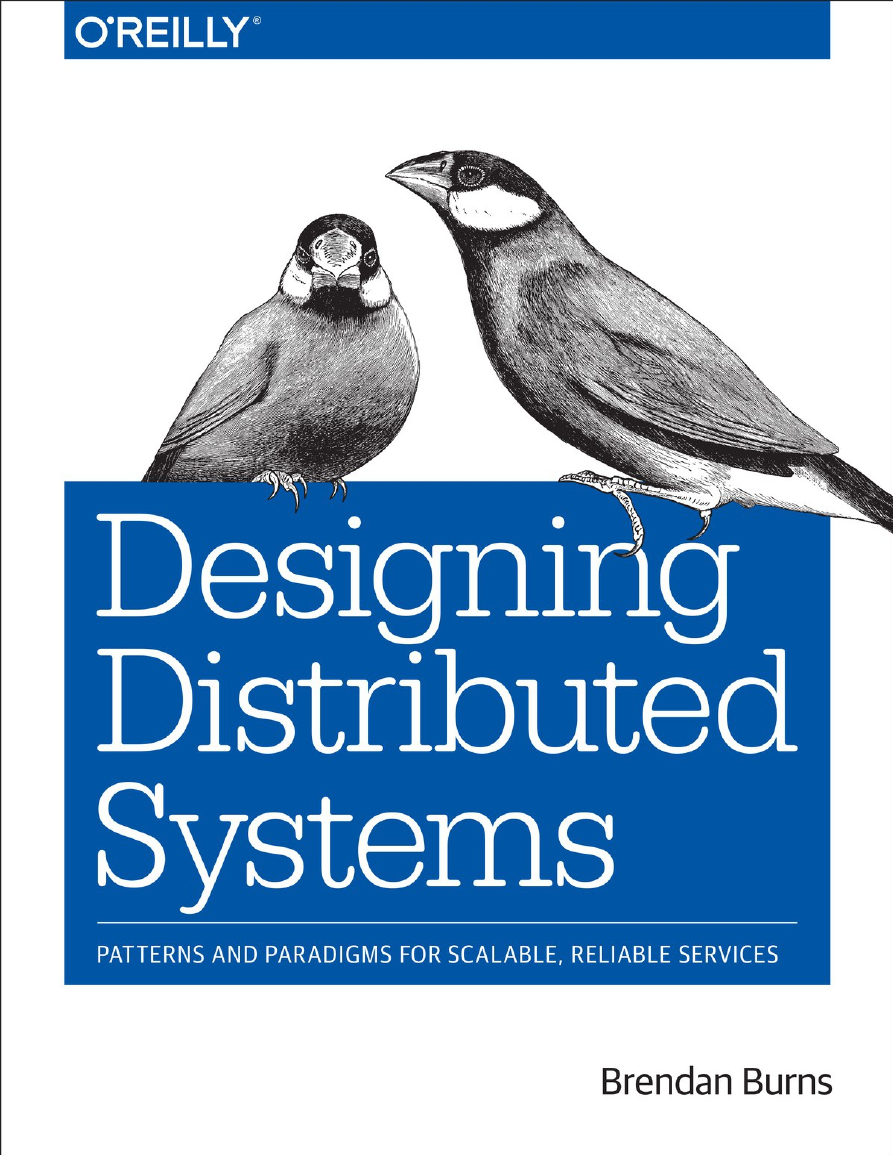
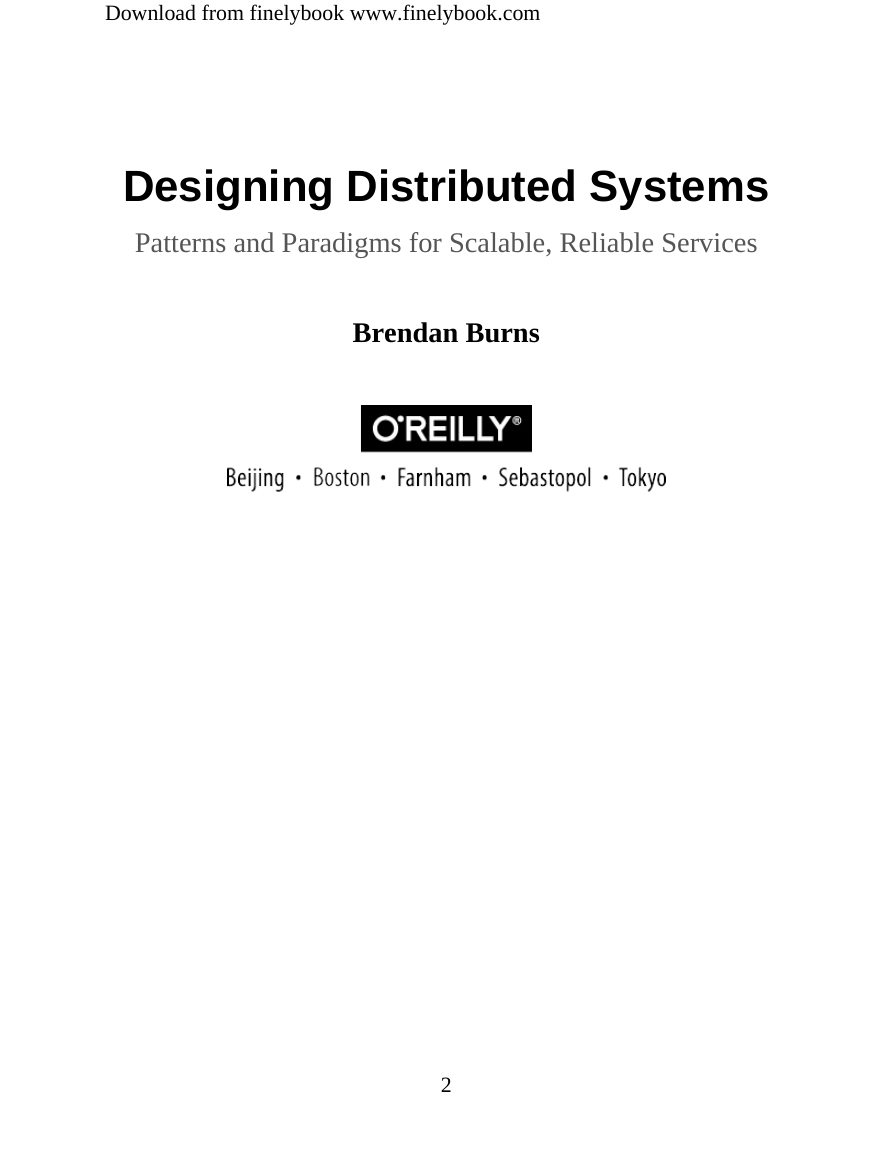


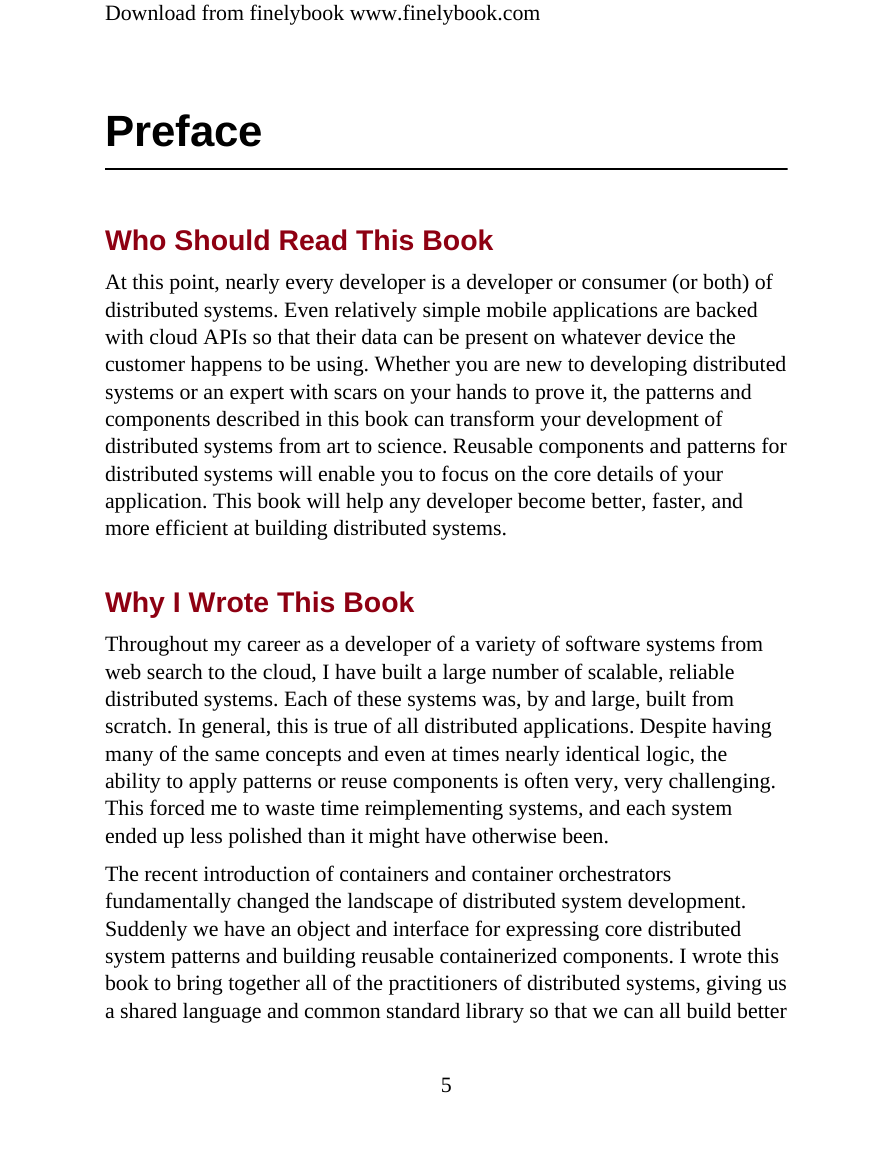
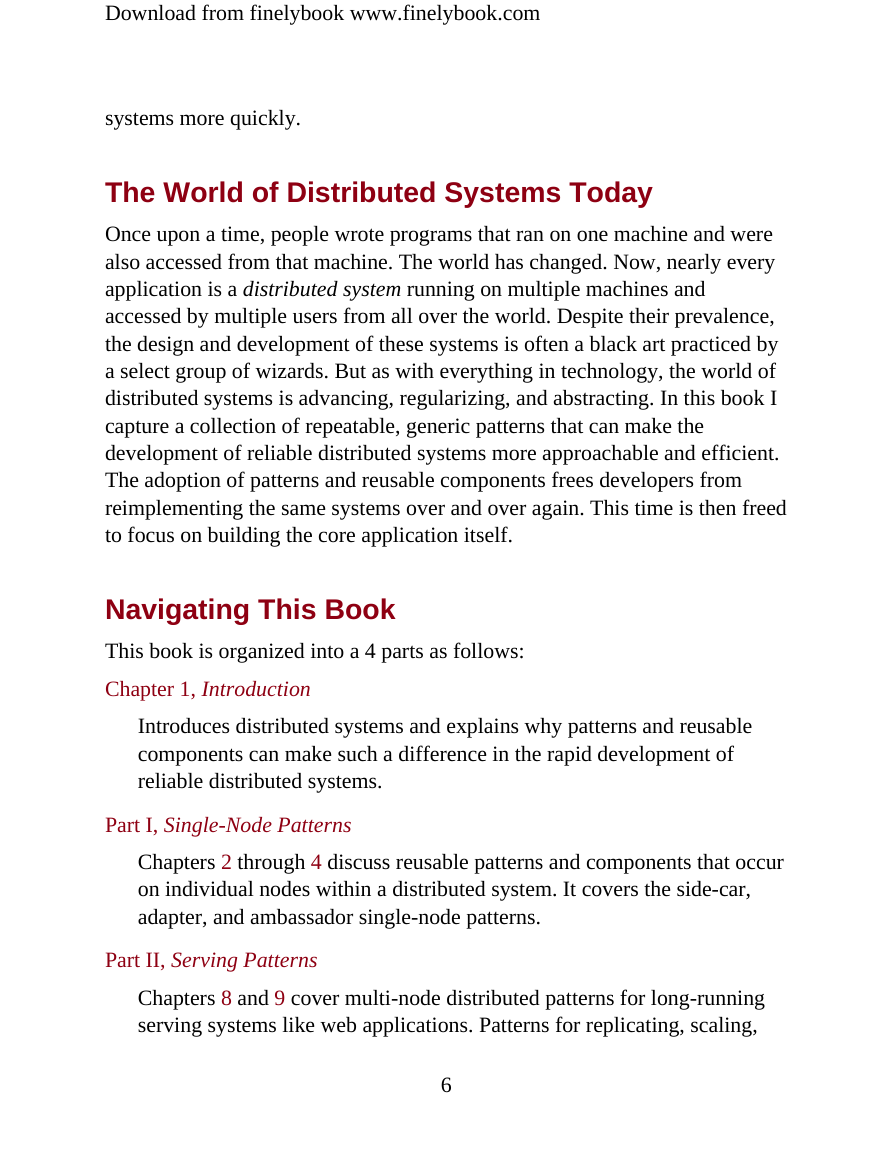
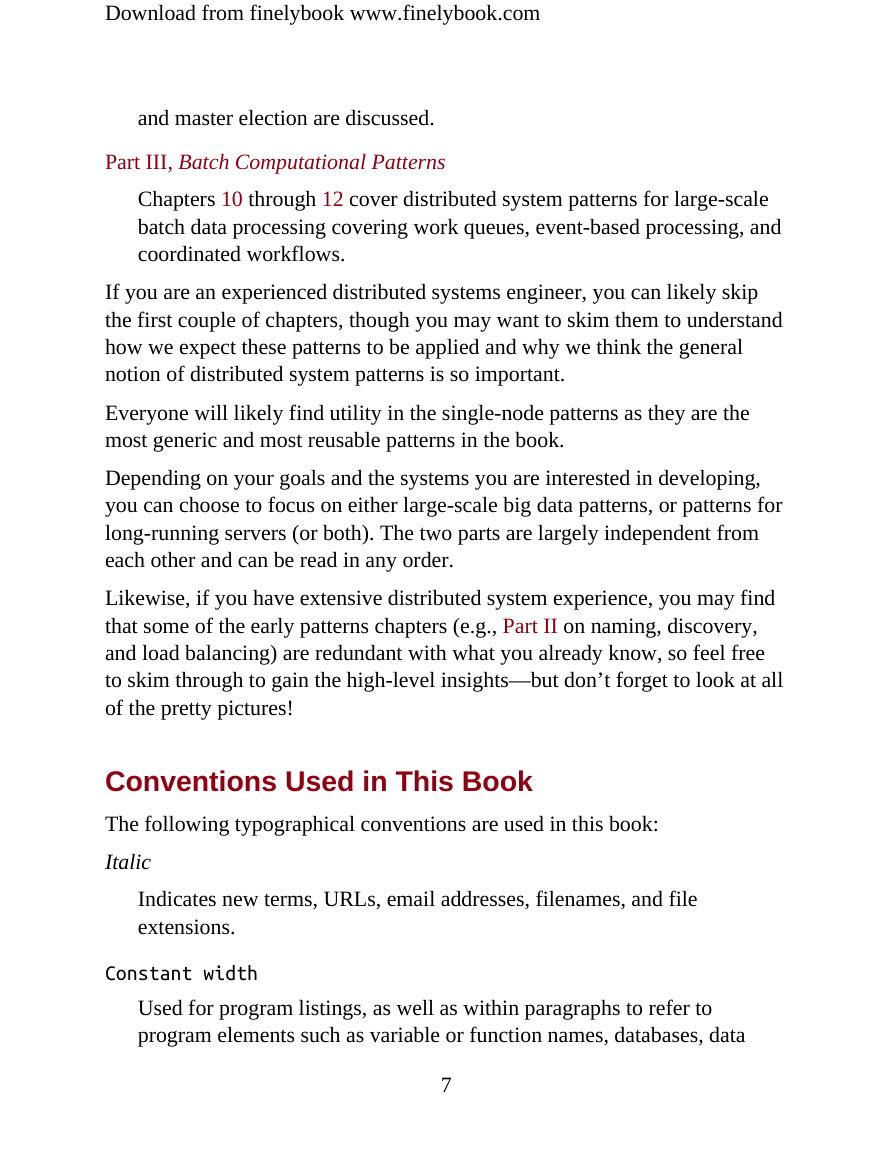
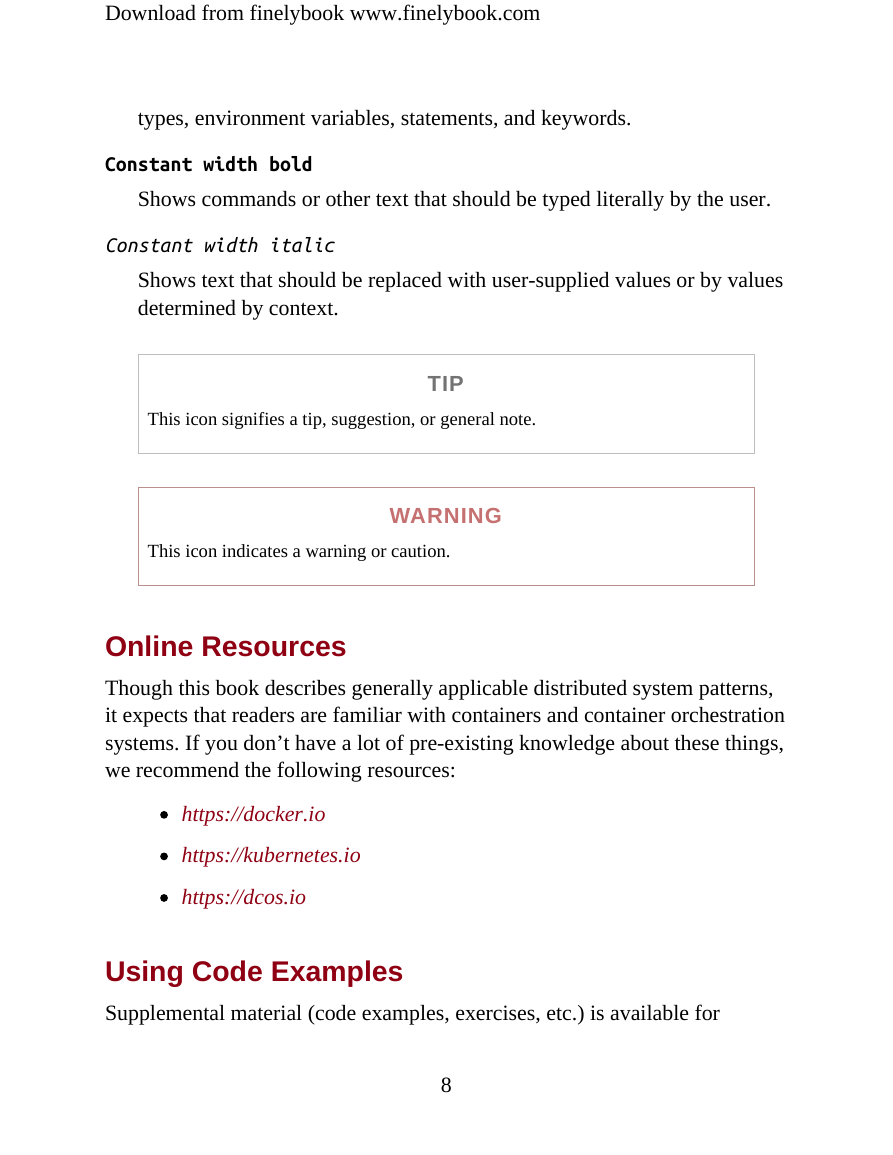








 2023年江西萍乡中考道德与法治真题及答案.doc
2023年江西萍乡中考道德与法治真题及答案.doc 2012年重庆南川中考生物真题及答案.doc
2012年重庆南川中考生物真题及答案.doc 2013年江西师范大学地理学综合及文艺理论基础考研真题.doc
2013年江西师范大学地理学综合及文艺理论基础考研真题.doc 2020年四川甘孜小升初语文真题及答案I卷.doc
2020年四川甘孜小升初语文真题及答案I卷.doc 2020年注册岩土工程师专业基础考试真题及答案.doc
2020年注册岩土工程师专业基础考试真题及答案.doc 2023-2024学年福建省厦门市九年级上学期数学月考试题及答案.doc
2023-2024学年福建省厦门市九年级上学期数学月考试题及答案.doc 2021-2022学年辽宁省沈阳市大东区九年级上学期语文期末试题及答案.doc
2021-2022学年辽宁省沈阳市大东区九年级上学期语文期末试题及答案.doc 2022-2023学年北京东城区初三第一学期物理期末试卷及答案.doc
2022-2023学年北京东城区初三第一学期物理期末试卷及答案.doc 2018上半年江西教师资格初中地理学科知识与教学能力真题及答案.doc
2018上半年江西教师资格初中地理学科知识与教学能力真题及答案.doc 2012年河北国家公务员申论考试真题及答案-省级.doc
2012年河北国家公务员申论考试真题及答案-省级.doc 2020-2021学年江苏省扬州市江都区邵樊片九年级上学期数学第一次质量检测试题及答案.doc
2020-2021学年江苏省扬州市江都区邵樊片九年级上学期数学第一次质量检测试题及答案.doc 2022下半年黑龙江教师资格证中学综合素质真题及答案.doc
2022下半年黑龙江教师资格证中学综合素质真题及答案.doc